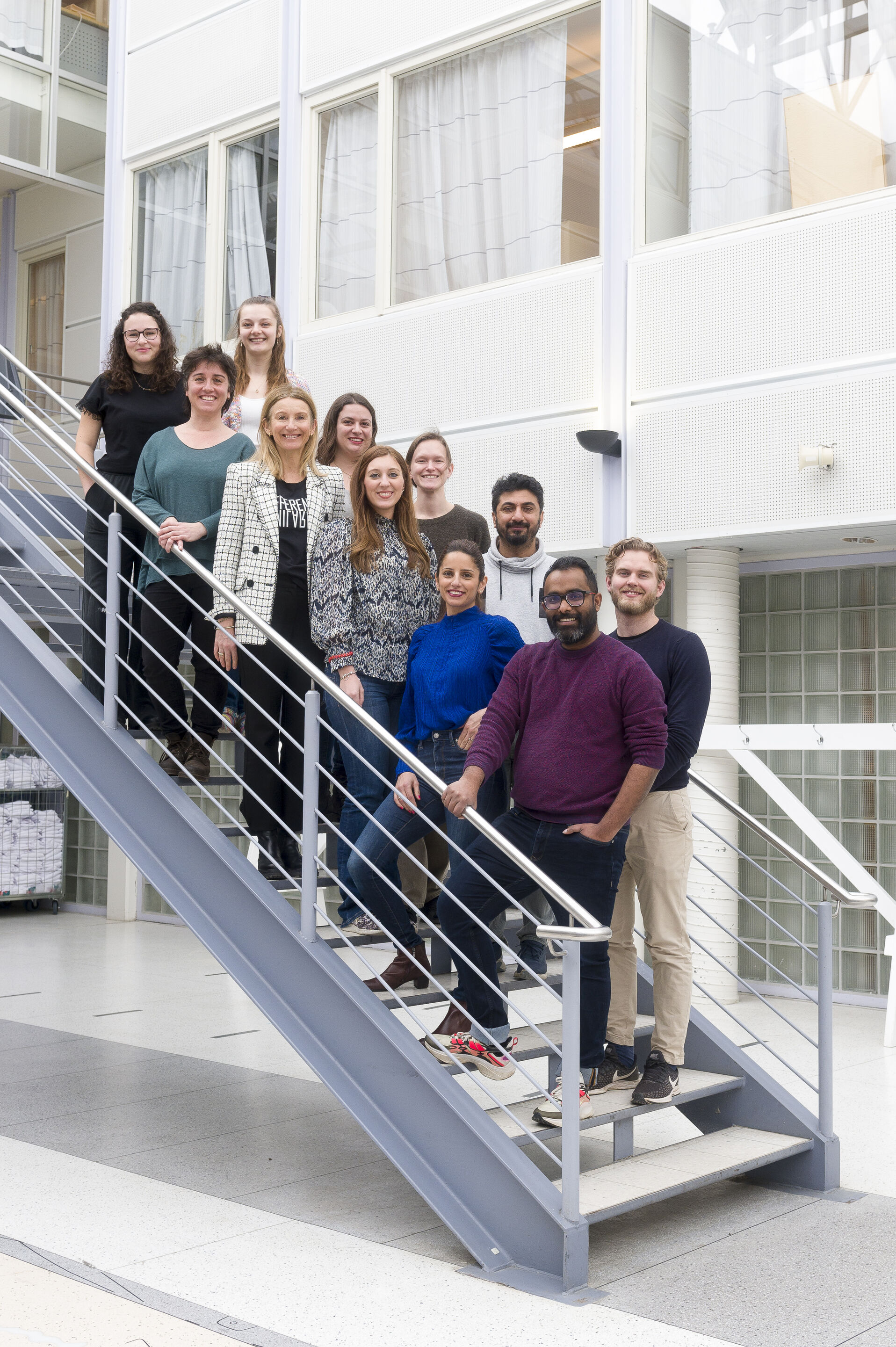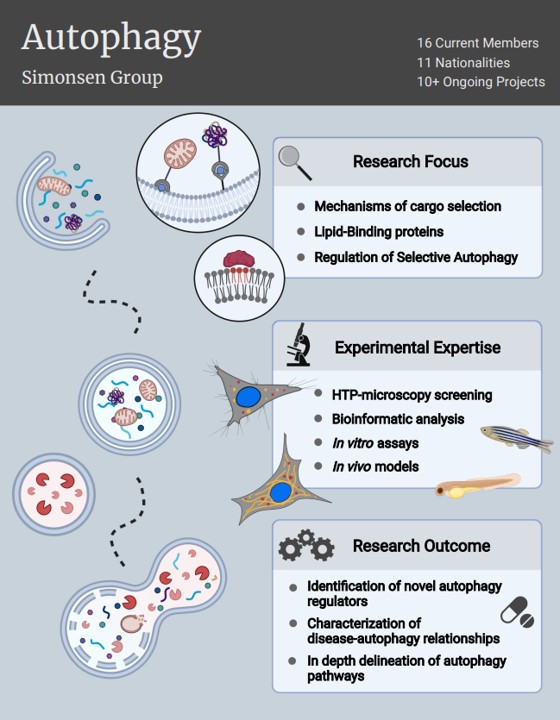The role of autophagy in tumorigenesis is highly complex, as autophagy can both protect healthy cells against malignant transformation and promote the growth of malignant cells.
Autophagic clearance of dysfunctional mitochondria (mitophagy) or protein aggregates (aggrephagy) can explain the tumor suppressive role of autophagy, but autophagy can also promote tumor cell survival under certain conditions, such as hypoxic stress and chemotherapy.
Autophagic clearance of mitochondria may also play an important role in the metabolic shift (from OXPHOS to anaerobic glycolysis) often seen in tumors, referred to as the “Warburg effect”. We aim to understand this conundrum better in order to identify novel autophagy regulators involved in specific pathways.This will enable us to define the disease-autophagy relationship more precisely.
The Autophagy group has recently carried out several screens to identify novel regulators of non-selective and selective autophagy and are currently characterizing their possible function in cancer development. We expect our research to provide novel insight into the role of autophagy in tumorigenesis, with a long-term goal to improve therapeutic treatment for cancer patients.

